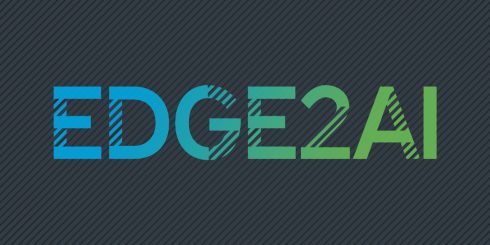
The Cloudera and Hortonworks merger that was first announced in October officially completed this month, paving the way for a new Cloudera. As part of the merger, the former rivals will live under the Cloudera name and offer an enterprise data cloud capable of supporting hybrid and multi-cloud deployments as well as provide machine learning and analytics capabilities.
“We are very excited about where this puts us in the big data, cloud, analytics, and IoT/streaming markets,” said Arun Murthy, co-founder and chief product officer of Hortonworks and now Cloudera’s CPO. “Cloudera is in a unique position where we can offer customers an open source approach to multi and hybrid cloud, all with common shared services like security and governance.
“Think about the large-scale cloud providers — it is in their best interest for customers to stay with their cloud only, therefore they don’t offer multi-cloud flexibility,” Murthy added. “Hybrid is another area where we have strengths and we see a lot of customers adopting hybrid approaches. The cloud is perfect for ephemeral workloads, but those can get quite costly in the cloud since they’re always on. We are delivering frictionless hybrid from the Edge to AI so customers can play the data where it lies.”
According to Noel Yuhanna, principal analyst for Forrester Research, this is huge news for the big data space because it will raise the bar for innovation. Yuhanna explained that more than 40 percent of organizations suffer from failed big data initiatives because of deployment complexity and lack of skilled resources.
“We see that cloud big data management platforms are still evolving, especially when it comes to end-to-end support for multi-cloud in the area of storage, integration, metadata, transformation, and governance. We believe that a combined platform from this merger will help overcome this gap based on their solution offering. In addition, the merger is likely to create an even broader big data services offering that will benefit customers to support even more complex and larger business initiatives,” said Yuhanna.
Yuhanna added that Hortonworks’ big data experience will blend nicely with Cloudera’s artificial intelligence and machine learning skills. For instance, Cloudera’s CEO Tom Reilly explained Hortonworks has invested heavily in real-time streaming and data ingest to support IoT use cases at the edge, while Cloudera has invested in machine learning and AI to provide data scientists the ability to automate machine learning workflows.
“This merger is likely to focus on innovation to make big data simpler whether for cloud or on-premises, or hybrid cloud. It’ll likely focus on automating all functions of big data platforms such as administration, integration, security, governance, and transformation requiring less resources, so that organizations can accelerate their business initiatives with big data,” said Yuhanna.
However, not everyone in the industry is on board with the merger. “I can’t find any innovation benefits to customers in this merger,” John Schroder, CEO and chairman of the board at MapR, stated when the merger was revealed. “It is entirely about cost cutting and rationalization. This means their customers will suffer. MapR has been innovating and delivering a better data platform for years, and we continue to see Cloudera and Hortonworks customers move to MapR.”
Murthy argues that the combined resources, scale and talent of Cloudera and Hortonworks will only put Cloudera in a position to do more, and to do it faster. Yuhanna echoed similar statements, believing the combination of the two big data powerhouses will only accelerate the pace of innovation necessary to support more business use cases in today’s digital world.
“Together the new Cloudera has the scale it needs to service the constantly changing needs of the world’s most demanding organizations and to grow even more dominant in the market. New open-source standards such as Kubernetes, container technology and the growing adoption of cloud-native architectures are major parts of Cloudera’s strategy. Our primary initiative out of the gate is to deliver a 100-percent open-source unified platform, which leverages the best features of Hortonworks Data Platform (HDP) 3.0 and Cloudera’s CDH 6.0. Cloud-native and built for any cloud – with a public cloud experience across all clouds — the unified platform embodies our shared ‘cloud everywhere’ vision,” said Murthy.
In addition, Murthy noted the new Cloudera will remain committed to its existing solutions. For instance, HDP 3, Cloudera Distribution Hadoop (CDH) 4 and CDH 5 will continue to be supported for at least the next three years; customer support channels will remain unchanged; Hortonworks Data Flow will be available with CDH; and Cloudera Data Science Workbench will be available on HDP.






